Few people sound as bullish on the Bronx as Joel Moser, the founder and chief executive officer of Aquamarine Investment Partners.
“I think the Bronx has every bit of the same characteristics as Brooklyn had pre-gentrification,” Mr. Moser told Commercial Observer. “It’s got great character, all the same excellent mass transit—i.e., the subway—great infrastructure, parks, the zoo, great avenues and an inventory in many neighborhoods of solid, prewar building stock.”
For New Yorkers old enough to remember Howard Cossell’s hand-wringing lament during the 1977 World Series as he watched the flames flicker from PS 3 near Yankee Stadium—“There it is, ladies and gentlemen—the Bronx is burning!”—this might sound overly optimistic.
“The Bronx is burning” resonated because it was emblematic of what was happening in the borough. Crooked landlords found that their property was worth more in the eyes of their insurance companies than it was good for rent. Crime was out of control. Lower middle-class neighborhoods had, in the space of a decade and a half, become slums. It felt like the end was near.
But careful historians of the Bronx will note something important: All of New York City seemed that way by 1977. (It was two years earlier that the New York Daily News ran its infamous, “Ford to City: Drop Dead!” cover as Gotham teetered on bankruptcy.)
“Anyone who thinks it sounds silly—that the Bronx doesn’t have the cachet—hasn’t lived in New York City long enough,” Mr. Moser insisted. “That was Brooklyn 20 years ago. A lot of boys and girls who grew up there—including me—couldn’t wait to get out.”
There’s no question that the fundamentals are there. No matter what, the Bronx will remain close to Manhattan. The Metropolitan Transportation Authority isn’t going to dismantle the Bronx’s existing subway lines. Land prices are still way below what they are in Brooklyn or Queens.
A revitalization “hasn’t happened yet,” Mr. Moser said. “But I think it’s about to. And I don’t think it’s going to take two decades—I think it’s going to be a couple of years.”
Actually, it is happening already. The city’s biggest mall has already opened there. Big-box stores have already opened. Developers are building big new housing. The film industry is hunting down space. Food and drink are plentiful. (Yes, one of its hotels is also a Legionnaires’ disease hotspot, but put that out of your mind.) The Bronx isn’t nigh—it’s now. Read all about it below.—Max Gross
MULTIFAMILY HOUSING
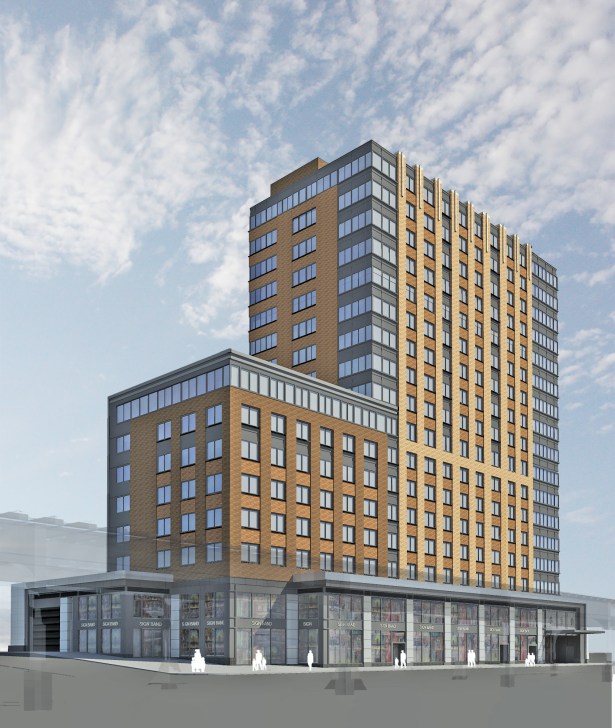
The Bronx is ripe for the picking and investors and residents are taking advantage of the remaining affordability the borough has to offer.
A new residential and commercial tower will soon rise along the site of the original Yankee Stadium in the South Bronx—providing 134 apartments for residents of various incomes. The 17-story development at 810 River Avenue between East 157th and East 158th Streets will become the first large housing project in the area since it was rezoned in 2009, according to recent reports.
Bronx-based builder M. Melnick & Co., the project’s sponsor, has developed multifamily, senior, supportive and mixed-use housing properties throughout New York City since 1934. The local real estate company, which owns more than 20 properties, including several housing developments in the Bronx, is now making a bigger push in the northernmost borough.
“People who want to live in the city are discovering that the Bronx is a viable place to live with cafes, bakeries, parks and much more,” Aaron Segal, a principal and vice president at M. Melnick & Co., told CO. “This is a good time to build in the Bronx. Our site is a block from the train and a 20-minute ride to Midtown.”
As rental and condo prices in Manhattan, Brooklyn and West Queens continue to skyrocket, the Bronx remains one of the city’s best options for those in search of affordable housing. Developers have been especially active in transit-centered neighborhoods such as Mott Haven in the South Bronx, David Walsh, the northeast division manager of Community Development Banking at J.P. Morgan Chase, told CO.
“The development occurring there has transformed over the last 10 to 15 years,” he said. “The Bronx borough president, Rubén Díaz Jr., is fantastic. He is very proactive in regards to development and recognizes what developers are bringing in. He loves low-income and has been pushing to see more middle-income units.”
As a result, the borough is attracting more lenders focused on mixed-income and affordable multifamily deals. While the multifamily market in the Bronx “was and is still primarily focused on entirely affordable projects, there has been a real push towards mixed-income,” Mr. Walsh said.
Just last week, Chase closed a $26.4 million construction letter of credit for an all-affordable, 112-unit housing development at 571 East 167th Street in the Bronx. The New York Institute For Human Development, New York State Homes and Community Renewal, and New York City Department of Housing Preservation and Development are collaborating on the project, according to the lender.
Mr. Walsh and his colleagues are also looking at a 50/50 project on Tremont Avenue in the Bronx that will feature 250 units. Half of those apartments will target low-income tenants and the other half will target middle-income tenants, he said.
“In the Bronx, in the last two years alone, we’ve lent over $500 million in 32 loans,” the Chase banker noted.
New York-based Amalgamated Bank—another name in affordable housing finance and the largest union-owned bank in the U.S.—recently lent $10.5 million for the acquisition of three apartment buildings in the Bronx’s Fordham Heights and Bronx River neighborhoods. An entity listed in city records as Tri Bronx LLC purchased the properties at 2486 Davidson Avenue, 1235 Morrison Avenue and 2335 Walton Avenue for a combined $11.3 million on July 29. The new owner could not be reached for comment.
“Affordable housing in New York remains one of the most critical issues in preserving our middle class,” Amalgamated’s president and chief executive officer, Keith Mestrich, said in a statement provided to Commercial Observer. “Amalgamated has a long history of helping make affordable housing possible in New York and we are proud to be able to help finance this deal.”
Banks remain the dominant players in the borough’s affordable housing market due to their ability to receive tax-leveraged returns, according to Adam Weinstein, the president and CEO of the New York-based affordable housing developer and operator Phipps Houses. It is more difficult for other lenders and investors to profit from an affordable housing property’s cash flow, he noted.
For that reason, the public sector remains another key contributor to the Bronx housing stock.
“The street rents in most of the neighborhoods we own property in are insufficient for commercial sources alone to finance construction,” Mr. Weinstein told CO. “The rent after deducting operating costs—like buying gas, installing electricity, insuring the property and funding labor—is still not enough to support construction with debt and owner equity. We plug that gap with a government source. In our case, the capital provided by the city government usually comprises 30 to 35 percent of the total.”
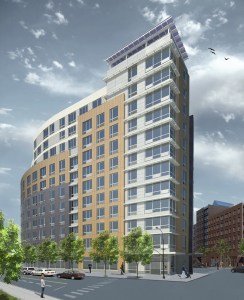
In July, Phipps broke ground on a 199-unit residential project in the South Bronx neighborhood of Melrose. The development, known as Elton Crossing sits on East 161st Street and will contain roughly 8,200 square feet of ground-floor retail, a courtyard, concierge services and a fitness center, among other amenities. The project accounts for part of 4,000 housing units the nonprofit organization has in its pipeline. Phipps owns and manages nearly 6,300 occupied affordable units in the city, with more than half of those located in the Bronx, Mr. Weinstein said. The developer is currently most active in the South Bronx, he noted.
“The South Bronx, where we are most interested, is a very dense, urban area with great access to transit and a vibrant mix of cultures,” said Mr. Segal of M. Melnick & Co. “Architecturally, there is a really interesting historical fabric of industrial buildings, Art Deco buildings and more modern structures.”
As the borough grows in popularity among developers, however, the availability of land for affordable housing projects is becoming increasingly scarce, he noted.
“Since the economic distress of the ’70s, sites in the Bronx have historically been more affordable, but now it is hard to find sites that pencil out for affordable housing,” Mr. Segal said. “That said, the local electeds are committed to providing as many housing options as possible for their constituents. That helps.”
Mr. Walsh of Chase also pointed to the growing interest from investors as a threat to the borough’s affordability.
“Three years ago, I would have said land value was attracting investors, but with what’s been happening in the Bronx in the last few years, values have risen dramatically,” he said. “You could buy a site for a reasonable price, but today it’s getting harder because the values are higher.”—Damian Ghigliotty and Danielle Balbi
BIG-BOX RETAIL
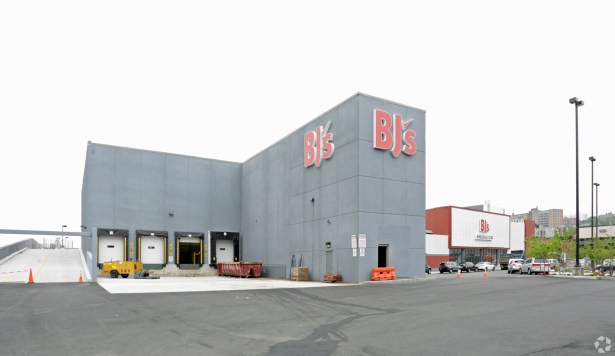
It’s not easy to find sites that lend themselves to 100,000-square-foot or bigger big-box stores but in the Bronx, chains are seeing opportunities.
At Riverdale Crossing, BJ’s Wholesale Club is the anchor tenant with its 120,000-square-foot-store. Mall developer Metropolitan Realty Associates and partner Angelo Gordon recently completed the membership-only warehouse club chain’s build-out. BJ’s has not yet opened.
“I think BJ’s saw the advantage of being in my shopping center,” Joseph A. Farkas, the president of Metropolitan Realty Associates, told Commercial Observer. “The ability to deliver big-box to a retailer like BJ’s is rare.”
The first phase of the 165,000-square-foot two-building outdoor mall at 184 West 237th Street at the former home of Stella D’Oro Biscuit Company’s factory in Riverdale opened last December with retailers like Petco, Smashburger and Chipotle, Buffalo Wild Wings and CityMD.
The Bronx has seen great success with its big-box stores. According to the office of the Bronx borough president, big-box stores like BJ’s, Target and J.C. Penney have some of their highest-grossing stores in the borough.
“Big-box stores create jobs and are incredibly popular with consumers, and their success in my borough reiterates the point: Bronxites are crucial to the city’s economy, and they can no longer be ignored by corporate America,” Borough President Rubén Díaz, Jr. said via a spokesman.
People will walk to the local store for basic, day-to-day needs, and mostly go the bigger chains to buy in bulk, said Adolfo Carrión Jr., the former-Bronx borough president and an executive vice president at development company Stagg Group.
A 165,000-square-foot Target anchors the Throggs Neck Shopping Center in the Ferry Point section of the Bronx, which opened late last year. Other retailers there include TJ Maxx, Famous Footwear, Sleepy’s, Petco and Applebee’s. Around the same time, Sports Authority, TJ Maxx and Party City opened in the then-new Broadway Plaza mall in Kingsbridge.
“I think people like the value the big boxes are able to deliver and the variety of goods that can be bought in a one-stop shopping situation,” Mr. Farkas noted.
Mr. Carrión is confident that more big-box stores will be coming to the Bronx.
“I think given the right incentives, these guys will make a calculated mass decision,” Mr. Carrión said.—Lauren Elkies Schram with additional reporting by Terence Cullen
MALLS
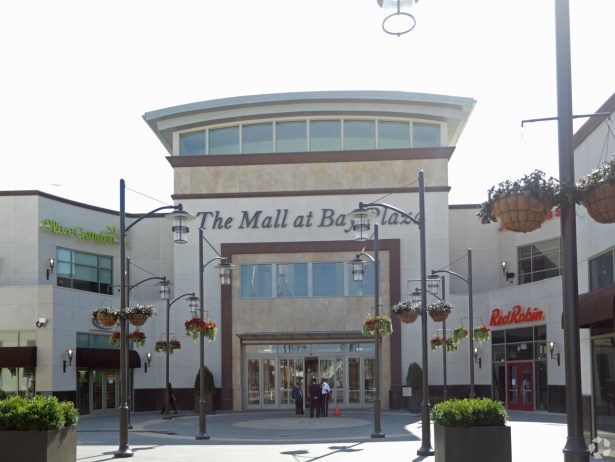
Last Friday marked a year since the opening of the city’s largest shopping mall, and according to the $300 million South Bronx mall’s developer, it has been met with success.
While he declined to cite specific numbers, Sam Shalem, the chairman and chief executive officer of Prestige Properties & Development Co., The Mall at Bay Plaza’s owner and developer, said retail sales are 20 percent above Prestige’s expectations.
“For Bronx residents it’s really something they didn’t have,” Mr. Shalem told Commercial Observer. “And that’s our primary market.”
Mr. Shalem said the mall was necessary in the borough as residents “were going to Westchester and Manhattan to get this kind of shopping.”
The mall includes a new 160,000-square-foot Macy’s and more than 100 retail shops such as Forever 21, Michael Kors, Gap, Victoria Secret, Kay Jewelers and Aeropostale.
For folks outside of the Bronx, a trip to The Mall at Bay Plaza means an opportunity to check out Billy Beez’s 20,000-square-foot children’s play center, the only Billy Beez location in the Big Apple. And starting in mid-September, people will be able to shop at British clothing store F&F’s first U.S. location, Mr. Shalem said. F&F is a brand of Britain’s biggest supermarket chain Tesco.
“Projects such as The Mall at Bay Plaza fly in the face of the perception that you can’t do business in The Bronx,” Borough President Rubén Díaz, Jr. said via a spokesman. “The success of this mall, which [celebrated] its first anniversary, shows that not only can businesses thrive in our great borough but that people in our borough have spending power. Developers are taking notice.”
Because of the 780,000-square-foot mall’s success, starting Sept. 6, MTA New York City Transit will extend weekend Bx5 bus service from Pelham Bay Park to the Bay Plaza Shopping Center, which is home to the one-year-old mall. In a June release, the MTA said the mall is “bringing new jobs and more shoppers to the area” and the new bus service “will serve the growing needs of those working and visiting the shopping center.”
Manuel Pantiga of Pantiga Group, a Bronx real estate brokerage primarily focused on residential, said: “I live near the Bay Plaza Mall. It has a great mix of stores. It seems to be very full.”
Indeed, the mall, which is located at the intersection of I-95 and Hutchinson River Parkway near the Westchester border, is 85 percent leased, Mr. Shalem said, and combined with the adjacent Bay Plaza Shopping Center (home to an AMC Theater, Staples, Toys “R” Us, etc.), Prestige has 2 million square feet of office and retail space, of which about 92 percent is retail.
Scot Hirschfield, a vice president of investment sales at Ariel Property Advisors, said even with the mall, there still remains room for more retail developments, as the borough has been “under-retailed.”
As more and more residential development crops up, it “will bring out a need for even more retail,” he said, adding, “It’s all good things.”—L.E.S.
INDUSTRY
For a long time, the Bronx looked like the final act for one of the poorest counties in the state. Scratch that: in the country.
But the city’s only mainland borough is finally landing on the radar of the kinds of companies who could make serious investments and set up industries—like, say, the film business—looking for cheaper land prices than are available in Brooklyn and Queens.
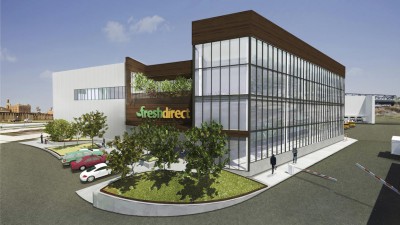
“We’ve got good bones. The older buildings are good, solid warehouse-type buildings,” said Adolfo Carrión Jr., the former Bronx borough president who now works for developer Stagg Group. “We’ve got more land. I think that there’s a collective understanding that the stigma continues to be lifted, so having a Bronx address isn’t what it was in the 1980s and 1990s.”
Food has been one of the borough’s most essential industries. Baldor Specialty Foods, which had its roots in Manhattan and Queens before moving to the Bronx in 2000, announced earlier this month that it would expand its 193,000-square-foot facility by 100,000 square feet at the Hunts Point Food Distribution Center, where it moved to in 2007. It’s one of several big-name tenants on city-owned land in the South Bronx that also includes Anheuser-Busch and Krasdale Foods as neighbors of Baldor.
With 115 food companies and about 8,000 jobs at the 329-acre site, the food distribution center accounts for half the food going through New York City stores and restaurants, according to the New York City Economic Development Corporation, which manages the land.
“Baldor’s inspiring growth within one of the world’s largest food distribution centers is evidence of the area’s thriving food manufacturing and distribution sector, a trend we are committed to continuing to fuel,” said Benjamin Branham, the EDC’s chief strategy officer, in a statement.
Mr. Carrión, who left the borough presidency in 2009, said the center has had its perks for the borough, as well. The facility and the companies that lease space there bring plenty of economic activity into the area, along with middle-class jobs that range from management to food processing and shipping.
“This is the place that feeds the region,” he said. “We’re going to need to continue supporting the food industry and all the jobs related to that.”
But beyond the borders of that site, warehouse-to-doorstep food distributor FreshDirect is relocating from Queens to the Mott Haven section of the Bronx. The company is building a 500,000-square-foot facility to be used as a warehouse and for offices.
Some of this food the Bronx is pushing out may no longer cross the East River to feed the production crews in Long Island City or at the Brooklyn Navy Yard, however. York Studios, a production facility based in Maspeth, Queens, announced in July it was opening a building on what’s now a vacant lot along the Bronx River. And if that doesn’t turn a few heads, Silvercup Studios is planning a $35 million renovation of 295 Locust Avenue in the Port Morris section of the borough. The currently 115,000-square-foot building sits not far from the Robert F. Kennedy Bridge, and will eventually become four movie studios.
Silvercup, which has become one of the city’s dominant studios in the last 30 years, was drawn to the high ceilings, the size of the Bronx building and the state tax credits that made the deal possible, said Stuart Suna, the studio’s president. It helped that the building is sandwiched between Long Island City (where it has two studios) and upstate, where more filming is taking place, he added.
But are people hesitant to come to the Bronx? No, said Mr. Suna, who added that he’s gotten inquiries from Men in Black director Barry Sonnenfeld and actress Sara Jessica Parker, whose show Sex and the City was filmed in the LIC locations, about when the studio will be done so they can start shooting.
“When we first built Silvercup [in Long Island City], people wanted to stay in Manhattan,” he said. “[But now] there’s a big demand. Most of the studios [are] pursuing us; we’re full in Long Island City.”—T.C.
FOOD & DRINK
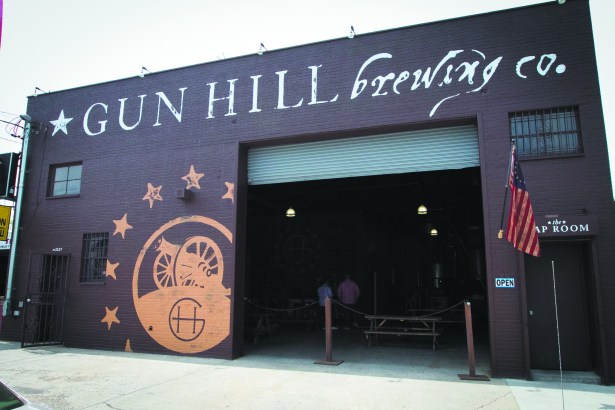
In this foodie town, Manhattan, Brooklyn and Queens get all the respect. This is very unfair. The Bronx has lots of food and drink to get excited about.
“We weren’t sure the reception we’d get,” said Dave Lopez, the owner of the Gun Hill Brewing Company at 3227 Laconia Avenue in Williamsbridge, just off Gun Hill Road, which opened 18 months ago.
The area is industrial, consisting of quite a few auto body shops. “There’s not a ton of places to go and unwind,” Mr. Lopez noted. So neither Mr. Lopez, nor his partner, Kieran Farrell, were positive how the locals would react to a craft beer brewery setting up shop—the first such brewery to open in the Bronx since 1961.
It turns out Messrs. Lopez and Farrell didn’t have too much to worry about. “There was a glaring need for something like this,” Mr. Lopez said.
During the weekends, hundreds pour into the taproom of the 5,000-square-foot brewery to try one of the six revolving beers on tap. (Beers go for $5 to $6, with a flight going for $12.)
Last September, the Bronx Brewery, a second 10,000-square-foot brewery, opened with a taproom and backyard at 856 East 136th Street in Port Morris. (Bronx Brewery had been brewing in Connecticut since 2011, but didn’t have a Bronx location until its Port Morris opening.)
“It’s mainly folks who live and work around here” coming during the week, said Bronx Brewery’s co-founder and general manager, Chris Gallant. “There’s a really nice artist community around there. And on the weekends it’s people exploring,” who come to try the six to seven brews on tap at $5 apiece.
According to Mr. Gallant the building down the block is filled with artists’ lofts, a coffee roasting plant and a custom furniture-marker.
And Commercial Observer has gotten wind of a third brewery: the Chelsea Brewing Company, which until recently had been brewing beer out of the Chelsea Piers, is readying itself to open a new space in the Bronx, according to multiple sources. (The owners of Chelsea Brewing could not be reached by press time.)
Certainly, there is a tension between the Bronx areas crying out for new bars and restaurants (like, say, Williamsbridge) and the ones already churning out great food and drink, waiting for the proper appreciation.
It’s true, David Chang or Mario Batali hasn’t launched any Bronx-based satellites yet. But, honestly, who needs Mr. Batali when you have Arthur Avenue?
Arthur Avenue is the Bronx’s version of Little Italy, but not overrun by tourists. It is where the Italian-Americans of the last century put down roots and did not budge during the tumult of the 1960s and 1970s. Some of the best Italian-American restaurants in the city—from Zero Otto Nove (2357 Arthur Avenue) to Mario’s (2342 Arthur Avenue)—reside there, alongside a plethora of Italian bakeries and even a big indoor Italian market.
And if Arthur Avenue isn’t your speed, there are the African restaurants along East Tremont. Or the Jewish delis of Riverdale. Or food trucks that specialize in pernil (pork shoulder—a Puerto Rican specialty).
“What makes the Bronx [cuisine] great is it’s just good food for people who live in the area,” said Baron Ambrosia, the filmmaker and host of the Cooking Channel’s The Culinary Adventures of Baron Ambrosia. “There’s very little interest in new, hipstery kinds of places, but you can eat solid food as it would be created in any of the stomping grounds for people” foreign-born, but now living in the Bronx.
Com Tam Ninh Kieu (2641 Jerome Avenue) has been Mr. Ambrosia’s latest go-to spot for Vietnamese food. “They have this Vietnamese iced coffee there that’s deadly and decadent… I hate comparing it to crack—it’s too simple a comparison—but it’s like crack,” Mr. Ambrosia said.
Parkchester is home to Mr. Ambrosia’s favorite Bangladeshi restaurant, Neerob (2109 Starling Avenue), which got The New York Times and New York magazine treatment a couple of years back. Dukagjini Burek (758 Lydig Avenue) is the Baron’s go-to spot to get Albanian food. And when he just wants a corned beef sandwich and Cel-Ray soda, it’s Liebman’s Deli (552 West 235th Street) in Riverdale.
There are some who want the South Bronx “to be the next Williamsburg,” Mr. Ambrosia said. “That’s the last thing we want… We don’t want it to lose its funk.” —M.G.



